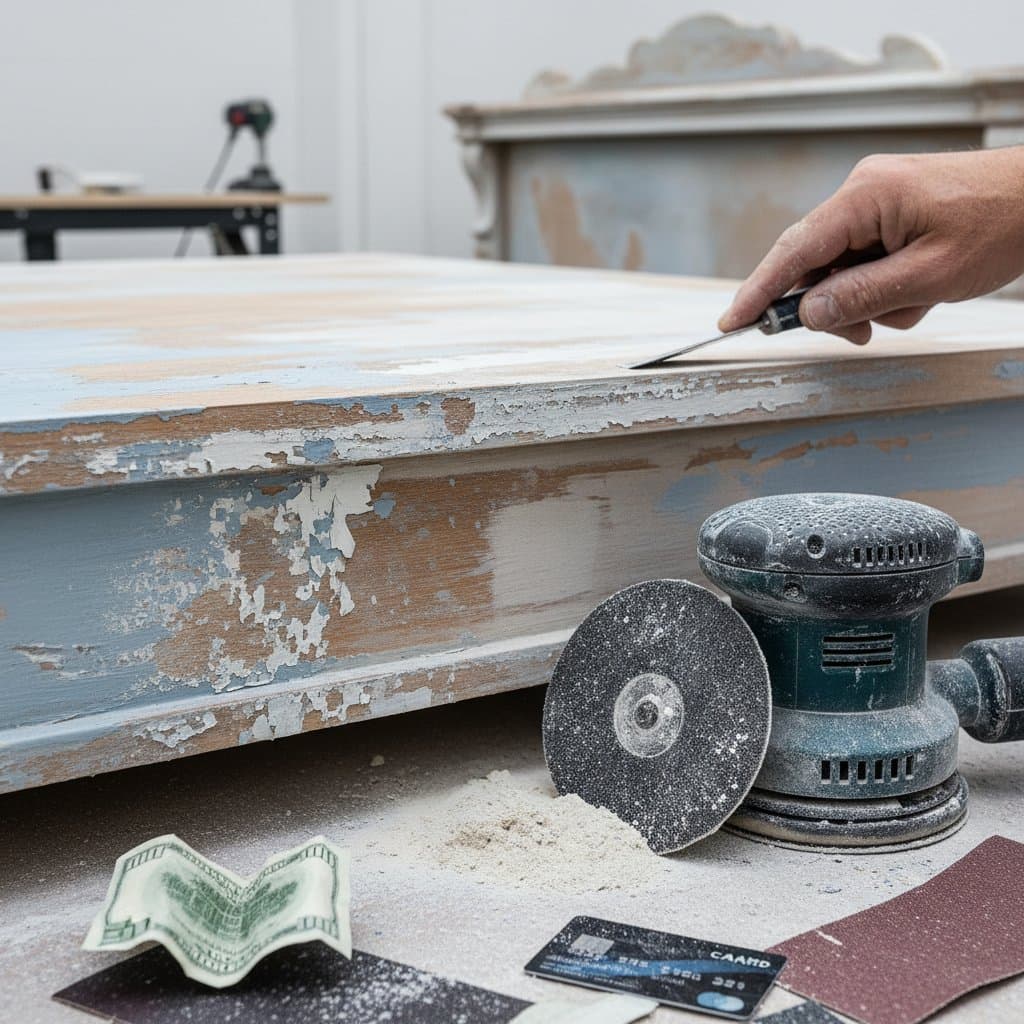Why Professionals Sand Between Coats to Avoid $800 Losses
A smooth paint finish appears simple, but it demands meticulous preparation. Sanding between coats stands out as an essential yet often underappreciated step in the process. Professionals recognize that this practice prevents adhesion issues, peeling, and uneven surfaces, which can result in repair costs exceeding $800 for materials, labor, and time.
Skipping sanding might seem like a shortcut, but it invites problems that compromise the entire job. Homeowners face not only aesthetic flaws but also structural weaknesses in the paint layers. Investing a short time in sanding yields a foundation for lasting protection and visual appeal.
The Hidden Expenses of Poor Adhesion
When paint layers fail to bond securely, the surface demands complete rework. This involves stripping old paint, applying fresh primer, and repainting, with costs for a standard room ranging from $500 to $800. Additional charges arise from cleanup, disposal of damaged materials, and delays in project completion.
Common failures include:
- Peeling layers that expose underlying surfaces to moisture and wear.
- Trapped imperfections such as brush strokes or dust specks that mar the finish.
- Inconsistent sheen, where glossy sections contrast with matte areas, requiring uniform correction.
Addressing these defects multiplies expenses, whereas sanding provides an economical alternative through proactive smoothing.
How Sanding Strengthens Paint Layers
Sanding refines each coat rather than stripping it away. High-quality paints still deposit minute ridges, fibers, and particles that disrupt uniformity. Gentle abrasion eliminates these elements, preparing an ideal base for subsequent applications.
The Sanding Process Explained
Painters select fine-grit sandpaper, typically 220 to 320 grit, for a light scuffing action. This method accomplishes two key objectives:
- Clears away residues like dried drips or airborne dust.
- Generates subtle scratches that enhance grip for the next layer.
These micro-abrasions foster mechanical interlocking, ensuring layers integrate without separation. Over time, such bonds withstand environmental stresses, from humidity fluctuations to daily abrasion.
The Role of Adhesion in Durability
Strong adhesion extends the paint's service life by resisting cracks and delamination. Well-bonded finishes endure cleaning, impacts, and seasonal changes without premature failure. In contrast, weak bonds accelerate deterioration, prompting early interventions that inflate maintenance budgets.
Breaking Down Costs: Preparation Versus Correction| Task| Average Cost | Description|
|-----------------------|--------------|-----------------------------------------------------------------------------|
| Sanding between coats | $50 - $150| Covers sandpaper, labor time, and dust containment measures|
| Repair and repaint| $500 - $800 | Encompasses scraping, priming, new applications, and extended drying periods |
| Complete repaint for peeling | $800+| Factors in fresh supplies, skilled labor, and intensive surface restoration |This comparison highlights the financial wisdom of upfront preparation. A modest sanding investment averts the steep price of reactive fixes, preserving both budget and schedule.
Key Factors Influencing Sanding Expenses
Multiple elements shape the scope and price of sanding in a painting endeavor.
Surface Characteristics
Drywall responds to minimal sanding, but textured or aged walls demand greater attention. Pre-existing rough patches or multiple prior layers can elevate preparation efforts by 20 to 40 percent.
Paint Formulation
High-gloss or enamel products require thorough scuffing to promote bonding. Flat sheens prove more accommodating yet gain from dusting removal and texture leveling.
Project Scale and Layout
Expansive areas or confined spots, such as those near ceilings or fixtures, extend labor duration. A typical bedroom sanding session lasts about one hour, whereas complex rooms may require several.
Existing Layer Quality
Uneven prior applications or absent priming necessitate extended smoothing. Such conditions add $50 to $100 in targeted labor to restore evenness.
Painter Expertise
Skilled workers execute sanding precisely, minimizing surface risks. Their efficiency reduces overall time and prevents downstream corrections.
Levels of Preparation Quality| Level| Cost per Square Foot | Features| Benefits Over Time|
|-----------|----------------------|-----------------------------------------------|---------------------------------------------|
| Basic| $1.50 - $2.50| Minimal sanding and basic smoothing| Temporary enhancement with potential touch-ups |
| Standard| $2.50 - $3.50| Comprehensive inter-coat sanding and patching | Reliable smoothness and adhesion|
| Premium| $3.50 - $5.00| Layered sanding, priming, and quality checks| Superior longevity and flawless appearance|Opting for advanced preparation secures enduring results, diminishing the need for frequent renewals. This approach balances initial outlay with sustained savings on upkeep.
Avoidable Errors in Sanding Practice
DIY efforts sometimes falter, generating avoidable setbacks.
- Employing coarse grit instead of fine leaves gouges that show through fresh paint.
- Neglecting post-sanding cleanup embeds grit, forming lumps in overlying coats.
- Rushing paint application on unclean surfaces undermines bonding integrity.
- Excessive abrasion thins primers or exposes substrates, necessitating localized fixes.
Correcting these oversights incurs $100 to $300 in extra resources. Professionals mitigate risks through systematic checks at each phase.
Long-Term Benefits of Thorough Sanding
Beyond cost avoidance, sanding elevates paint efficacy and aesthetics. Prepared surfaces support optimal coverage, yielding finishes that endure twice as long as hasty applications. This resilience curtails repaint cycles, conserving funds across property ownership.
For those preparing to sell, impeccable walls signal meticulous care, boosting market appeal and supporting premium pricing.
Practical Steps for Effective Painting
Homeowners can facilitate superior outcomes with targeted actions.
- Thoroughly dust and wash surfaces prior to initial coats to lessen sanding demands.
- Apply robust primers as a foundational layer for enhanced layer integration.
- Examine drying coats for flaws and perform light sanding to address them promptly.
- Engage contractors who prioritize inter-coat refinement in their workflows.
- Time projects for stable conditions to optimize drying and limit contaminants.
Implementing these measures maintains fiscal control alongside professional-grade durability.
Evaluating Quotes for Comprehensive Work
Review bids to confirm inclusion of inter-coat sanding. Budget options may exclude it, inviting future complications. Allocate modestly more for detailed prep, recognizing its role in averting substantial overruns.



